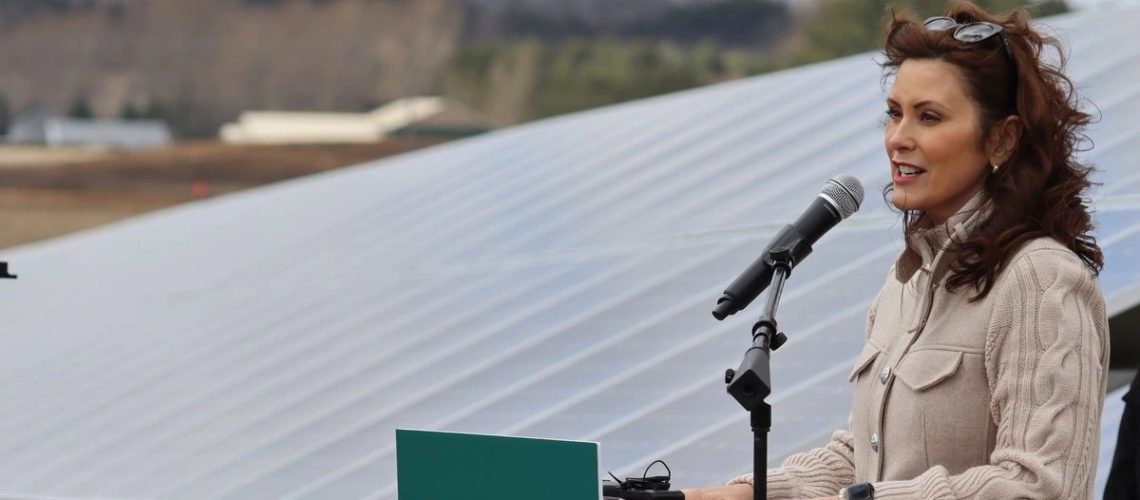Reaching carbon neutrality by 2050 requires immediate action, starting with six steps to take by 2030 that include more clean energy and an emphasis on clean transportation and charging infrastructure.
Michigan Governor Gretchen Whitmer joined Liesl Clark, Director of the Michigan Department of Environment, Great Lakes, and Energy, business owners, tribal leaders, and students at a large solar array in Traverse City, Michigan to announce the Michigan Healthy Climate Plan that proposes that the state would get 60% of its electricity from renewable sources and build infrastructure to accommodate millions of electric vehicles by 2030. This builds on the Governor’s plan set forth in 2020 that set a goal of carbon neutrality by 2050.
The Governor positioned the new plan as a roadmap that would reduce emissions while also creating clean energy jobs, boosting economic development, and improving public health.
“If we follow the steps outlined in the plan and collaborate with public and private sector partners, we can build a Michigan where every Michigander has clean air to breathe, clean water to drink, and access to healthy, affordable local food,” said Whitmer. “Today, we are positioning Michigan to become the global center of clean energy innovation where workers can get good-paying jobs, from those that don’t require a college degree to careers in advanced engineering and science.”
The plan has been under development since 2020 when the Governor committed Michigan to achieving economy-wide carbon neutrality by 2050. This included interim reductions of 28% by 2025, 52% by 2030, and maintaining net negative greenhouse gas emissions after 2050.
The Michigan Healthy Climate Plan lays out the roadmap for how the state can reach carbon neutrality by 2050, prioritizing actions that must be taken in the next eight years. The following are the six pillars of the plan: Commit to Environmental Justice and Pursue a Just Transition
- Clean the Electric Grid
- Electrify Vehicles and Increase Public Transit
- Repair and Decarbonize Homes and Businesses
- Drive Clean Innovation in Industry
- Protect Michigan’s Land and Water
Since taking office, the Governor has begun taking steps outlined in the plan. She committed to powering all State of Michigan facilities with 100% renewable energy by 2025 and attracted battery and electric vehicle manufacturing investments from automakers, who have added 21,600 jobs in the state. The Governor signed bipartisan budgets investing millions of dollars in clean energy improvements and proposed a budget that includes investing over half a billion dollars in climate action. Recently, Michigan state senators Polehanki and McCann introduced bills to establish a $500 charging equipment and $2,000 electric vehicle rebate to knock off nearly $10,000 off the price of an electric vehicle when combined with the federal tax credit.
Michigan is currently ranked 26th in solar installations in the country, with a growth projection of 2,388 MW over the next five years, according to the Solar Energy Industries Association (SEIA). In March of this year, A Vibrant Clean Energy study commissioned by Vote Solar found that GW-scale investments in distributed solar and storage would yield the lower cost between two approaches studied for Michigan to achieve economy-wide carbon neutrality by 2050. In commenting on the draft of the Michigan Healthy Climate Plan, Vote Solar’s Will Kenworthy showed that the governor’s goals are achievable. Kenworthy noted that Michigan should “start now” to get to 50% clean energy by 2030, as “getting the first 50% is a no regrets policy” he said.



